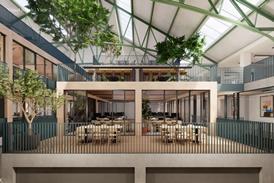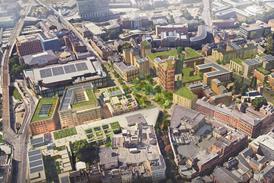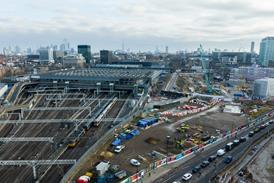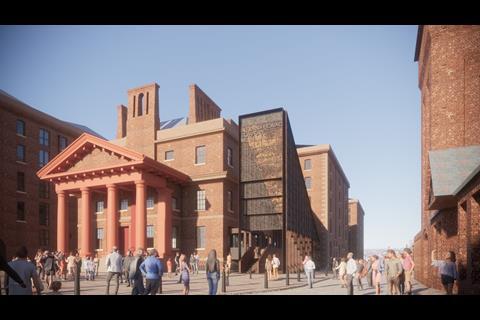The landmark museums on the city’s waterfront occupy Grade I-listed buildings
FCB Studios will lead the £58m redevelopment of Liverpool’s International Slavery and Maritime museums for National Museums Liverpool after planning permission was approved by Liverpool City Council.
Both museums are located in Grade I-listed buildings on Liverpool’s waterfront: the Hartley Pavilion and the Dr Martin Luther King Jr. Building, previously the Dock Traffic Office.
By connecting the buildings via an iron and glass bridge, National Museums Liverpool aims to weave the story of Britain’s maritime history with its role in the transatlantic slave trade, while creating panoramic views across the Royal Albert Dock.
A new entrance pavilion with a monumental sculpture will be created for the International Slavery Museum, which is the world’s first and only museum dedicated to the transatlantic slave trade.
An ironwork facade will dress the entrance pavilion, while the space’s integrated balustrade timeline will show how the International Slavery Museum received recognition despite its origins as a gallery in the basement of Maritime Museum 30 years ago.
The pavilion’s large scale and distinctive design was criticised by some councillors at the planning committee meeting. The Victorian Society also raised objections to the proposals, referring to the ironclad entrance as an ‘exceptionally serious intrusion’ into the context of the historic Martin Luther King Jr Building.
Upgrades to the Maritime Museum include an improved visitor welcome space, as well as enhanced commercial facilities such as a shop, cafe and event spaces.
Kossy Nnachetta, partner and architect at Feilden Clegg Bradley Studios, said: “We are excited about the designs; the engagement they encourage and the stories they tell.
“This project – like both museums within it - embodies a determination that our collective and shared history is expressed.
“It boldly addresses themes of restorative justice through space; which is fitting for the first museum in the world dedicated to the transatlantic slave trade. Liverpool, the UK and the world are ready for this.”
FCB Studios was appointed in January after the previous designer, Adjaye Associates, stepped away from the project last August. The change of architect came in the wake of sexual misconduct allegations brought against its founder, David Adjaye, which he has disputed.
National Museums Liverpool has worked in collaboration with Historic England, Merseyside Civic Society and Liverpool City Council to bring forth the development plans.
Ralph Appelbaum Associates, who were appointed in 2022, are leading on the exhibition design for both centres, which will close on 5 January 2025 for works to begin, reopening to the public in 2028.
The National Lottery Heritage Fund has contributed £9.9m to the project.
Postscript
This article was amended on 3 October 2024 to clarify that Adjaye Associates stepped away from the project, rather than being removed, and that David Adjaye disputes the allegations made against him.























No comments yet